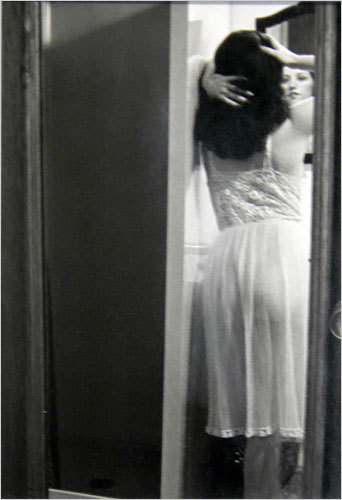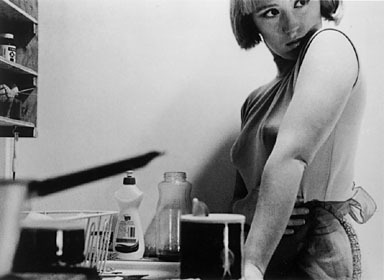A modern incorporation of the “male gaze” can be found in the article, “A Piece of the Action: Images of ‘Woman’ in the Photography of Cindy Sherman”. The author, Judith Williamson, discusses the fact that women in our society are judged solely on their appearance. Society makes it seems as if the woman’s clothes are a reflection of her personality or identity. Williamson uses feminist artist, Cindy Sherman, as an example of an artist who attempts to depict women in positive perspectives within her digital images. Sherman executes this by using the following techniques in her work: lighting, composition, contrast, and photographic style. A few of Sherman’s artworks that Williamson mentions are Film Stills and several Untitled digital images. In these artworks, the artist shows images of women as the observer or the “beholder” instead of the usual theme of the “male gaze” in various artworks pertaining to women.
In “A Piece of the Action: Images of ‘Woman’ in the Photography of Cindy Sherman”, Williamson also states that “‘image’ has a double sense”. Williamson is attempting to express that a digital image or photograph can be interpreted based on the viewer’s own personal preference or mindset of the displayed image and/or it can be interpreted based on the actual representation of everything that can be observed within the image. It is up to the artist to carefully produce images that will bring their message across. In this case of feminism, or advocating positive, uplifting themes of women, the artist must challenge the viewer’s (specifically the target audience of White males, who are the dominant audience in society as a
whole) preconceived judgments of characteristics that they feel women should be labeled with. After reading the “A Piece of the Action: Images of ‘Woman’ in the Photography of Cindy Sherman” article, it is evident Williamson gets her point across well when using Sherman’s artworks to support the author’s claims of the various ways society visualizes or fantasizes women which causes them to form their own stereotypes of an individual or the entire gender group as a whole just by observing their outward appearance without even taking the woman’s personality into consideration. The stereotypes that the viewers usually have are encouraged by things that they read in books or magazines, watch on television and movies, and/or are learned from family members or other individuals that they are close to.



No comments:
Post a Comment